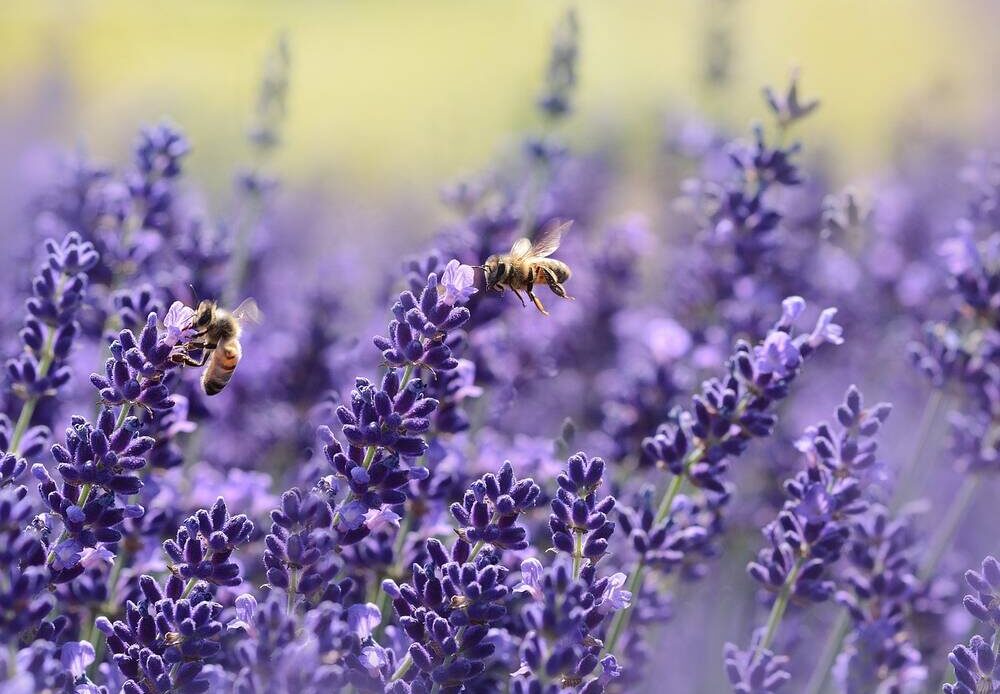To appreciate the Earth’s complex, lush, living and breathing biodiversity, and all the wonders that come with it. Learn about the biodiversity crisis, what is causing it and the implications it has on us. Finally, learn about the fantastic processes in place to revitalise biodiversity, and how you can make a positive impact in your day to day life.
1. What is biodiversity?
Biodiversity refers to biological diversity, encompassing all living organisms on the planet. It’s the variability and variety of life, responsible for all basic structures of life that we entirely depend on.
The impossibly vast subject can be segmented into three areas, the first being genetic diversity, meaning variations of genes within a population or species. For example, Huskies are well adapted to freezing climates with thick fur, but Greyhounds can reach immense speeds. Their genetic diversity allows them to be resilient in a range of environments.
Then, species diversity explains the variety of species in an ecosystem or region, which in turn strengthens it, such as species richness or species evenness, and high species diversity fosters strengthening ecosystem services. A tropical rainforest, for example, will host thousands of varied species, microorganisms and plants that contribute to ecosystem function and health.
Finally, ecosystem diversity in comparison encompasses the range of different ecosystems in their unique environments, structures and processes—like tropical rainforests, boreal forests or temperate deciduous forests.
2. How do animals and plants communicate with each other in complex ecosystems?
Animals and plants are truly wonderful creatures, but it’s perplexing at times when imagining how they think, feel and communicate with one another. Did you know Oak Trees utilise fungal networks as a system of nutrient exchange, or to send distress signals to each other?
A fascinating example is through chemical signals, such as pheromones. These are used by ants to mark trails, moths use them to attract a male and bees can signal alarm to their hives and better equip themselves for harm. Allelochemicals, however, are the plant equivalent. Milkweed attracts monarch butterflies and tobacco plants release nicotine to deter herbivores.
Another method of communication is visual cues, like colour changes—a poison dart frog will present warning colours to signal danger and peacocks flash their feathers, or patterns—a zebra’s unique markings allow it to be individually recognised by its peers.
With sound, songbirds attract males, monkeys vocalise socially in groups, bats use echolocation to navigate, and frogs emit large croaks during territory marking as well as to mate.
Touch is a key method, with ants sharing information via their antennas, and grooming in social animals to improve hygiene and bonding (such as bats).
Plants can detect movement from herbivores, in vibrations, and pea plants can respond to vibrations from water, subsequently growing roots near it.
3. What are the most fascinating migratory journeys in the animal kingdom?

Some species of animals have to make immense migratory journeys to compensate for changing seasons and weather in search of more suitable breeding grounds or after impacts from climate change.
An example of a fascinating migration journey is the bar-tailed Godwit which migrates non-stop from Alaska to New Zealand twice a year, without sleep or rest for a whopping 7,000-mile journey. This takes around 8-10 days and is the longest known non-stop flight of any bird. They go to the Arctic for breeding, with longer daylight and more food, and the warmer coast for winter, avoiding the harsh winter.
Another example is the grey whale, migrating from its feeding grounds in the Arctic on crustaceans to Baja California, Mexico, for its breeding grounds in warmer, shallow waters. This is a 12,000-mile round trip taking a few months, during which they rely on blubber not food, and float motionless or swim slowly to attain rest.
4. What are the most surprising ways animals use tools?
There are some really interesting ways that animals utilise tools just like we do, indicating their intelligence, practicality and advanced cognitive skills. Did you know that dolphins will carry marine sponges on snouts to effectively forage the sea floor while being protected?
Crows carry around little hook-shaped leaves to effectively extract hard-to-reach food, and sea otters smash stones to break shellfish open, using their bellies as a surface while floating.
Amazingly, octopuses can carry coconut shells to quickly shelter from harm; a portable armour, and orangutans will keep large leaves to use as easy umbrellas when it rains.
5. Where are the biggest biodiversity hotspots in the world?
Biodiversity varies vastly across the planet’s diverse regions and natural environments. Some areas are referred to as ‘biodiversity hotspots’: places with thriving wildlife, buzzing ecosystems and resilient, complex natural environments that are heaving with diverse species.
A key example is Madagascar, with its coastal mangroves, lush rainforests, spiny forests and dry deciduous forests. More than 90% of its wildlife is endemic, meaning they are only found there, such as lemurs, fossa, chameleons or the Madagascan periwinkle.
Similarly, the Amazon Rainforest is a vibrant hotspot for biodiversity even inhabiting around 10% of all known species in the world. It supports 16,000 tree species and thousands of plants, alongside diverse animal species like sloths, macaws and jaguars. These reside within tropical rainforests, floodplains and rivers, each jam-packed with deep ecological richness and value.
The Great Barrier Reef, off Australia’s northeastern coast, is the largest system of coral reefs over 344,000 square kilometres. Out of it’s 1,500 fish and 411 hard coral species, birds, molluscs, and marine animals, many are endemic and unique to the reef. Its mangrove forests, seagrass beds and coral reefs support a range of essential wildlife. Sadly, the hotspot is becoming more of a spot, due to decades of harmful coral bleaching from ocean acidification and rising sea temperatures. It’s now full of endangered species, and many species are vulnerable to external threats within unstable ecosystems.
Ongoing conservation efforts are enhancing the reef’s resilience, and indications show that the reef could recover if favourable conditions could be restored.
6. What are the rarest species in the world?
Have you heard of a vaquita? They are the smallest type of porpoise, and conservation organisations worldwide are working together to try and save the species. They’ve been under threat from bycatch, getting caught in illegal fishing nets, as well as habitat degradation. They also only give birth to a single calf every two years.
Similarly, the Saola resembles a small deer with long pointed horns reaching half a metre in height, and is very rare with not even 100 animals left. They are elusive and shy and fall victim to traps, but widespread conservation efforts have made progress such as captive breeding programs.
7. What would happen if bees went extinct tomorrow?

If bees went extinct tomorrow, we would lose a primary source of plant pollination and plant biodiversity would begin a steep decline. Economic loss would prevail, with vast majorities of agriculture dependent on the bees pollination for success, including around 75% of the flowering plant species on the planet and 35% of global food crops—like nuts, seeds, fruits and veg.
Their extinction would cost us lots of nutritional food that supports human health as well as medicine, meaning our health would likely decline, and manual pollination would have happened on a mass scale to prevent this, likely impossible to meet the standard set by the bees.
8. What is the biodiversity crisis?
The biodiversity crisis is the decline of biological diversity, and the varied abundance of life, on our planet. Unprecedented threats since the Industrial Revolution and subsequent centuries of harmful human activity have caused the decline.
In the UK there is widespread land use for urban development, intensive agriculture and high levels of pollution. Our nation’s biodiversity levels were deemed in crisis in 2019.
If it prevails, the consequences would be ecosystem collapses, meaning reductions in essential ecosystem services water purification, climate regulation and pollination, bringing threats to human survival.
Pesticides, monocultures and intensive farming are the key threats to agriculture. Urban development means that cities have expanded, with heaps of infrastructure that destroys habitats and natural spaces.
More and more emissions are let off from industrial pollution, as well as waste offsets that harm ecosystems. Deforestation is constantly knocking down habitats and homes for animals and plants to thrive and provide us with the ecosystem services we need to survive.
Fish stocks have depleted from mass overfishing, including bycatch which traps and kills birds, mammals and other fish unintentionally. Critical declines in fish levels, including the removal of top predators, have caused imbalances in ecosystems which leaves it vulnerable to environmental challenges such as climate change.
9. What are the most recently extinct animals?
Scientific projections estimate that up to 150 species, including plants, insects, microorganisms, and animals, go extinct daily. Countless species will go extinct without notice, especially smaller organisms and less-studied plants. In contrast, larger and better-studied species’ are more closely monitored, offering opportunities for intervention and higher rates of survival.
Some recent species that have become extinct include the Splendid Poison Frog, due to habitat loss and a harmful fungal disease in the cloud forests of western Panama, formally declared extinct in 2020. In 2019, Spix’s Macaw was declared extinct in the wild due to habitat destruction of the Brazilian forests and illegal trapping—its striking blue feathers are in high demand within the exotic pet market. Thankfully, the bird exists in captivity and many reintroduction efforts are underway.
In 2016 in Bramble Cay, a tiny island in the Great Barrier Reef, the Bramble Cay Melomys became extinct (a mosaic-tailed mouse). Extreme weather conditions from climate change like rising sea levels and surges from storms led to inhabitable living conditions.
‘Lonesome George’ died in 2012, the last remaining individual of the Pinta Island Tortoise species. The species declined from over-exploitation alongside invasive species and habitat destruction of its home in Pinta Island, Galápagos Islands.
George was discovered in 1971 and was taken to Charles Darwin’s Research Station in the islands, and was carefully looked after, with many failed breeding attempts with similar tortoises.
10. What are some surprising ways that biodiversity affects human health?

Biodiversity affects the human population in many ways—an utter lack of biodiversity would lead to mass extinction. Ironically, human activities are the primary force behind this potential self-destruction.
Nutrient-rich food is essential for human survival, and biodiversity loss equates to loss of ecosystem services, like pollination, which keeps fruits and vegetables in bloom.
It regulates diseases, as biodiverse ecosystems will have a healthy system of predators keeping mosquito numbers down which carry dengue fever and malaria.
It supports a range of medicinal practices, and the plants, animals and microorganisms we depend on for some areas of healthcare will only remain accessible within biodiverse environments.
Biodiverse forests and wetlands keep our air fresh and our water clear.
Interacting with natural, biodiverse environments provides mental health benefits that can reduce stress, depression and anxiety, overall supporting human well-being.
11. What is Biodiversity Net Gain (BNG)?
England is paving the way for sustainable development with the Biodiversity Net Gain (BNG) policy, and enforcing a workaround for the development industry as we know it. It symbolises a monumental redirection in our nation’s contributions to climate change.
Rather than knocking down habitats to make space for new developments and builds, developers will now fail to obtain planning permission unless they contribute 10% to the nation’s net gain of biodiversity, effectively overcompensating for any biodiversity lost at the development site.
This became mandatory for smaller sites in February 2024 and for major developments in April 2024, meaning that now, nearly all new developments in the country are making a positive impact on the planet.
Developers must meet the 10% gain over a course of 30 years, and this is ideally met on-site, to most directly rectify habitat loss, but many developers will look off-site to meet the gain. That’s why we’ve created our leading off-site BNG Unit Marketplace, connecting land sellers and developers across the country.
A third option is available which involves purchasing statutory credits from the government, yet deliberately overpriced to encourage the other methods beforehand.
12. What are the benefits of Biodiversity Net Gain (BNG)?
Biodiversity Net Gain (BNG) is a fantastic policy that means development can continue forwards in a sustainable way. Alongside mitigating the prevalent biodiversity crisis it brings a vast range of benefits.
The policy quite beautifully forces a whole sector in England to dedicate time and effort to the environment and our biodiversity, and restructure their entire models of work in a way that is entirely sustainable, to the degree of boosting our environment.
A primary benefit of BNG, sheltering our biodiversity, is enhanced ecosystem services, like pollination, water purification and carbon sequestration which massively aid the fight against climate change.
Healthier ecosystems from revitalised habitats will support species and genetic diversity, strengthening their resilience to environmental challenges and maintaining essential diverse populations.
High levels of biodiversity boosts our well-being; enhancing quality of life in many areas, as well as providing recreational and cultural benefits, boosting economies, strengthening communities and providing long-term sustainability.
13. How does climate change affect biodiversity?

Climate change is a huge contributor towards globally declining biodiversity levels, and it does so in many ways.
For example, global warming makes habitats too hot for animals and plants, and rising sea levels inundate mangroves, salt marshes and other key coastal habitats.
Phenology, or the timing of natural patterns or cycles, is thrown off by climate change, which can disrupt and compromise established patterns of migration, breeding and flowering.
Climate change increases the frequency of extreme weather events like storms and floods capable of wiping out entire habitats and harming their inhabitants.
Water becomes less available, with droughts on the rise, affecting species relying on rivers and wetlands, and water temperatures rising, which can decline cold-water populations.
14. What other legislations are helping biodiversity?
Beyond Biodiversity Net Gain, there are many other legislations and policies that actively aid biodiversity levels.
The Environment Act in 2021 cultivated BNG, as well as LNRS (Local Nature Recovery Strategies) which mean that local authorities have to actively enhance local nature.
The Office for Environmental Protection (OEP) has been created as a board to monitor and manage environmental regulations, strictly ensuring that biodiversity commitments are met by the government.
ELMS (Environmental Land Management Schemes) offer money to farmers if they adopt environmentally friendly farming practices that enhance biodiversity, for example, annual payments for herbal leys (£382 per hectare) or multi-species cover crops (around £150 per hectare).
15. How can I help improve biodiversity?
To improve biodiversity, you can pick up some new green habits, indulge in some fun green hobbies this summer, or get involved with organisations.
For example, ensure you are recycling correctly, and consider starting a compost. It’s actually quite straightforward, and there are immediate benefits (no more stinky bins in your kitchen, and the kitchen won’t fill up so quickly!)+
If you’re up for a fantastic summer project that will maximise your garden’s beauty, create a natural pond—encourage wildlife and support the natural ecosystem.
Swap out your upcoming shopping excursions for a day out to the charity shops, and likely find what you were looking for at double the quality for a fraction of the price. Use sustainable transport such as cycling, walking and using public transport or share cars to help reduce emissions.
Finally, you could donate to conservation organisations, and be sure to check for any local groups for volunteering, getting stuck in and collaborating on broader green community projects!
References
https://www.worldwildlife.org/pages/what-is-biodiversity
https://education.nationalgeographic.org/resource/biodiversity
https://royalsociety.org/news-resources/projects/biodiversity/biodiversity-in-the-uk
https://www.gov.uk/government/collections/biodiversity-net-gain

